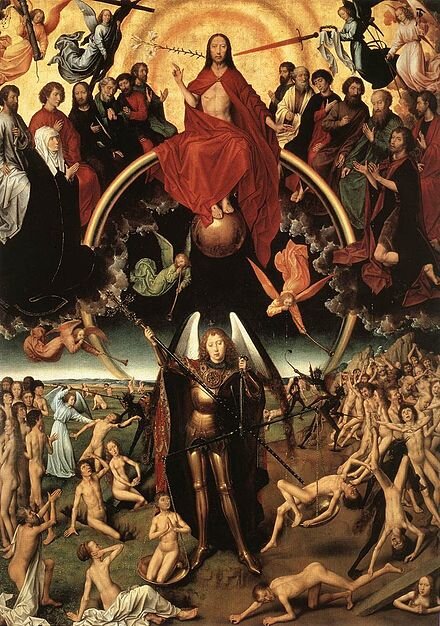Dies irae (Ecclesiastical Latin: [ˈdi.es ˈire]; "the Day of Wrath") is a Latin sequence attributed to either Thomas of Celano of the Franciscans (1200 – c. 1265)[1] or to Latino Malabranca Orsini (d. 1294), lector at the Dominican studium at Santa Sabina, the forerunner of the Pontifical University of Saint Thomas Aquinas, Angelicum in Rome.[2] The sequence dates from at least the thirteenth century, though it is possible that it is much older, with some sources ascribing its origin to St. Gregory the Great (d. 604), Bernard of Clairvaux (1090–1153), or Bonaventure (1221–1274).[1]
It is a Medieval Latin poem characterized by its accentual stress and rhymed lines. The metre is trochaic. The poem describes the Last Judgment, trumpet summoning souls before the throne of God, where the saved will be delivered and the unsaved cast into eternal flames.
It is best known from its use in the Requiem (Mass for the Dead or Funeral Mass). An English version is found in various Anglican Communion service books.
Dies irae (Ecclesiastical Latin: ; "the Day of Wrath") is a Latin sequence attributed to either Thomas of Celano of the Franciscans (1200 - c. 1265) or to Latino Malabranca Orsini (d. 1294), lector at the Dominican studium at Santa Sabina, the forerunner of the Pontifical University of Saint Thomas Aquinas, Angelicum in Rome.
